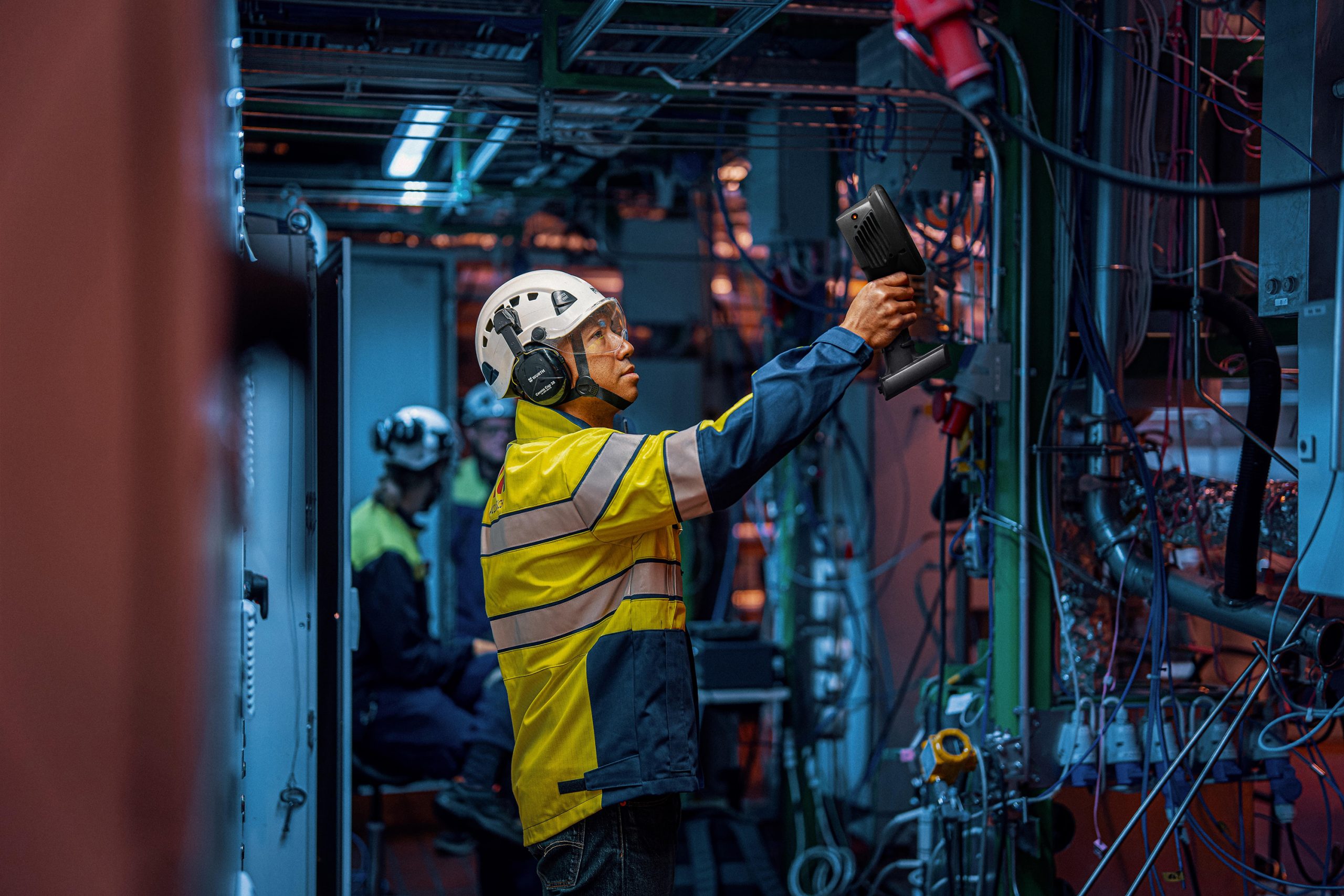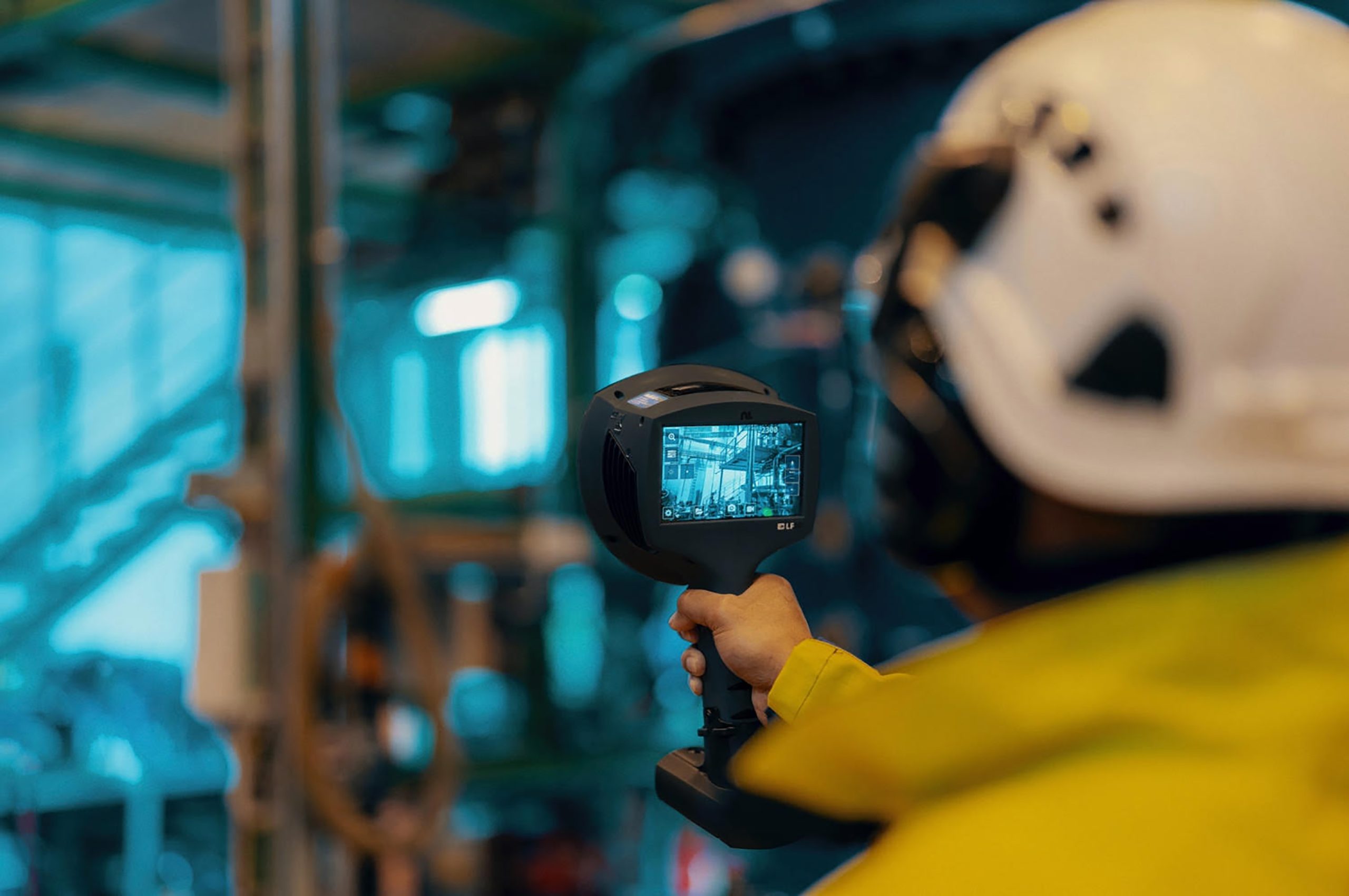Teledyne FLIR global business development director Rob Milner talks to NAM about detecting compressed air leaks and how that can result in significant productivity gains and cost savings.

Mining sites present a dizzying complex of industrial machinery, tools and varying operations for the many different processes that can require massive amounts of manpower, energy, along with precision and timing to get results.
Air compressors make for an essential component of the entire mining process, with compressed air being widely used and assisting at every level of the process. The mining industry has used air compressors extensively for decades for tasks ranging from powering equipment to delivering clean air and providing ventilation to create safer, more efficient processes.
Besides making mining safer and more efficient, compressed air is the industry’s preferred method due to its adaptable, convenient nature. They perform well in various mining processes and can withstand harsh wear and tear.
However, over time, compressed air systems are prone to leaks, which can increase energy costs by causing the compressor to work harder; today, between 10% and 20% of electricity in a mine is from compressed air generation. Leaks tend to occur in joints and weak points and cause pressure level fluctuations, which can reduce efficiency of air-operated tools and increase time required to complete work.
Leaks also increase the compressor’s run time and cause unnecessary cycling, shortening equipment service life and driving up maintenance costs. Associated costs can rise quickly: between 2.3% to 5% of total mine energy costs can be saved through the detection of compressed air leaks.
Acoustic cameras answer the call
Acoustic cameras can offer the advantage of swiftly, precisely pinpointing a leak’s origin, and it requires minimal training from operators, even in environments with high levels of noise and complexity. As a result, mines can promptly take measures to decrease energy wastage, mitigate safety risks and optimize equipment performance.
To use the camera, simply point and shoot, targeting the device towards equipment, pipes and lines that may have leaks. A lightweight, one-handed acoustic camera is carried throughout the site and employs 124 microphones to create a precise acoustic image that visually displays ultrasonic information. The acoustic image is then transposed in real time on top of a digital camera picture so an operator can accurately pinpoint the source.
Coupled with connectivity to a cloud service, the combined solution automatically saves images to the cloud after capture. An operator and team can then access stored files, separating sound sources for deeper analysis and classification of problems.

Location, location, location
To meet the mining industry’s challenges, mining companies can turn to technology, with a particular emphasis on condition monitoring. Acoustic cameras can offer a powerful solution for mining condition monitoring and is specifically designed to discover compressed air leaks as well as partial discharges including corona and arcing in medium- and high-voltage electrical systems.
Sensitive acoustic cameras, featuring as many as 124 audio sensors, can detect and pinpoint even very quiet noises from a long distance, making it ideal for the harsh environment of mining operations. For example, the FLIR Si124’s sensitive microphones are also advantageous when inspecting high-voltage systems, which requires a safe distance from the energized equipment.
How mining applies ACs
Pressurized air leaks generate broadband sound that extends from audible to ultrasonic frequencies. Some examples of processes that involve leaks include drilling, where compressed air is used to power a rotating drill bit, penetrating the firm ground and providing access to its minerals. Also, with pneumatic tools that need dry, clean air to function correctly. Air compressors deliver this air to mining tools and devices, allowing them to work without electricity.
Acoustic inspections: Proven advantages
Energy efficiency is top of mind and, in mining, compressed air leaks can contribute significantly to wasted energy. However, by employing these cameras to promptly detect and address leaks, mining operations can enhance energy efficiency and decrease overall energy consumption and, in turn, realize reduced expenses and a diminished environmental impact.
Compressed air leaks can adversely affect the productivity of mining operations, impeding the efficiency of pneumatic equipment. By swiftly identifying and repairing such leaks, mining companies can optimize equipment performance and enhance overall productivity.
To further lower costs, an acoustic imaging camera can help ensure a consistent and uninterrupted energy supply vital for mining extraction and production.
The FLIR Si124 acoustic imaging camera improves the operational continuity of mining facilities. The camera detects compressed air leaks early on, reducing energy waste and financial losses. It also helps to prevent unplanned downtime caused by high voltage component failure and helps to ensure there is a consistent and uninterrupted energy supply that is needed for mining extraction and production. The camera requires minimal training and is easy to incorporate into the maintenance cycle of mining facilities, even in the noisiest areas.
Air compressors deployed for mining helped and continue to help revolutionize the industry, delivering reliable equipment to ensure miners can get the work done safely and effectively.
About the FLIR Si124
FLIR Si124 industrial acoustic imaging cameras sense, display and record sound waves by producing a precise acoustic image derived from a 124-microphone array. The acoustic image is overlaid onto a visible camera image within an easy-to-use, ergonomic, one-handed camera solution. Compared to traditional inspection methods including soap-bubble and single microphone acoustic inspection, the Si124 can help locate issues up to 10 times faster for common mechanical, electrical, vacuum and compressor systems.
The entire Teledyne FLIR Si124 family of devices, including the tethered and cordless battery options of Si124, Si124-PD and Si124-LD, are available globally.
